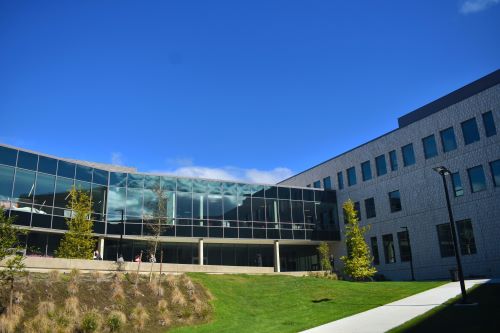TPO vs. EPDM: Which is Right for Your Property?

Anyone who owns a home probably has a passing knowledge of roofing materials – at least the ones that are common on residential properties. But what happens when they need to install a roof on a commercial property? Commercial structures are a whole different animal, as any of the local roofing contractors in Kansas City, MO, will tell you. So how do you determine what kind of roofing material to use on a commercial building?
Flat Roof Design
First, it’s important to know that most commercial roofs are flat rather than peaked. A flat roof is more practical when the square footage you’re covering is enormous. It’s also important to know that flat roofs are not usually completely flat. They often have a slight angle to allow for water drainage, or they use a specially-designed taper system that helps with water run-off.
Popular Roofing Systems
The type of roofing material used is different, too. Roofing companies in Kansas City don’t use shingles on a flat roof because it’s too easy for water to get in under the shingles when they’re used on a flat surface. Rather, commercial roofs are made of materials designed to protect a flat surface, sealing it so that water can’t leak underneath the material and cause problems for the inhabitants in the building below.
Two of the most common types of commercial roofing materials are TPO and EPDM. Below are a few of the differences between the two to help you decide which one is best for your new roof.
Ethylene Propylene Diene Monomer (EPDM)
EPDM is a synthetic rubber surface that’s quite durable, especially under extreme weather conditions. Because it’s rubber, hail bounces right off. For this reason, it’s one of the most popular commercial roofing systems for building owners in the Midwest. EPDM has been around for over 50 years. Any commercial roofing construction company will have this type of system in its arsenal.
One of the drawbacks to EPDM roofs, though, is the dark surface. The dark color absorbs heat, increasing the surface temperature of the roof and the temperature of the building below. This drives up cooling costs during summer months. On the flip side, an EPDM roof can last for up to 30 years, making it a good investment for savvy business owners.
Thermoplastic Polyolefin (TPO)
TPO roofing systems are quickly gaining in popularity as businesses start to focus more on energy-efficiency and cost-cutting initiatives. TPO offers many advantages, one of which is the color of the roof. TPO roofs are white. This means the sun’s rays are reflected off the roof rather than being absorbed by it. The result is lower utility costs for the building owner. The A/C unit has an easier time cooling the building since harmful UV rays are being reflected off the roof.
TPO is also a bit more resistant to punctures and tears than an EPDM surface is. TPO is chemically adhered into place, whereas EPDM surfaces are mechanically fastened down. While both are good, TPO is a little more challenging for a roofing construction company to install or repair because a power source is needed. EPDM roofs don’t require that.
Shamrock Has Your Building Covered
There’s a lot to know about commercial roofs and the your roofing contractors in Kansas City, MO, know all there is to know about TPO, EPDM, and other types of commercial roofing systems. Shamrock Roofing and Construction has forged a name for itself in the commercial roofing business by becoming a reputable source of information and assistance for area building owners. Contact Shamrock today for all your commercial roofing needs!